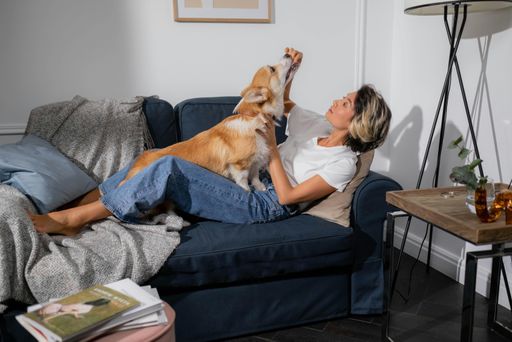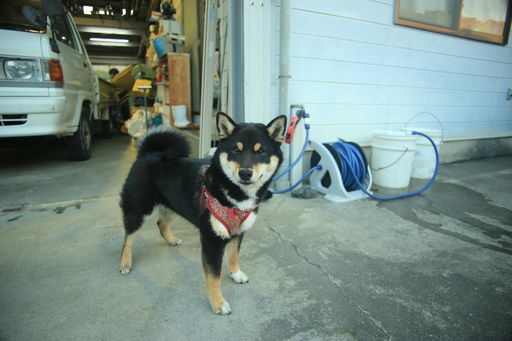A few of dogs' most critical car-related risks include exposure to dangerous temperatures, motion sickness, and physical injuries from sudden movements or collisions. Leaving a pet unattended in a parked vehicle can quickly lead to heatstroke, while unsecured dogs may be thrown around during quick stops or accidents, resulting in broken bones or worse.
Traveling with dogs can make road trips more fun, but it also requires extra precautions to ensure their safety. Pet owners can help prevent accidents and make the journey safer and comfortable for their best furry four-legged passenger by being aware of these common hazards and taking proactive steps.
1. Unsecured Windows and Front Seat Riding
Riding with the windows down might seem fun for dogs, but it can be surprisingly risky. Open windows expose dogs to flying debris, which can injure their eyes, and if they lean too far out, they risk falling out or being hit by passing objects. The front seat may also seem convenient, but it puts dogs in the direct path of airbags, which are designed for adult passengers and can harm or even fatally injure pets in an accident.
To minimize these risks, consider only partially opening the windows or using pet-friendly guards to allow airflow without the danger of your dog hanging out. Keep dogs in the back seat, away from airbags, and safe from impact. A crash-tested harness or carrier is ideal for securing them, especially in case of sudden stops or turns.
2. Heat-Related Hazards
Heat poses a serious risk to dogs in cars, especially during warm or sunny days. Cars can heat up quickly, even with the windows cracked, creating a potentially dangerous environment for pets. Dogs are particularly sensitive to temperature changes, especially those found in extreme weather, and prolonged exposure to hot seats or poor ventilation can lead to overheating, heatstroke, and even burns from sun-heated upholstery.
The best way to minimize heat risks is to keep the car as cool as possible. Parking in shaded areas, using cooling mats or pet-friendly seat covers, and ensuring good airflow all help keep your dog cool in the car. If your trip is long, consider investing in spillproof bowls so your dog can stay hydrated. Leaving your dog alone in the car should be avoided, even briefly, as temperatures can rise dangerously fast.
3. Loose Objects and Driver Distractions
Loose items in a car can quickly become unpredictable hazards in the event of a sudden stop or turn, threatening anyone and everyone in the vehicle. When dogs ride in cars, unsecured objects like bags, water bottles, or toys can turn into projectiles that may injure your dog or passengers during abrupt movements like stop-and-go traffic. Additionally, dogs free to roam can distract the driver or pursue objects around the car, increasing the likelihood of accidents.
To prevent these risks, secure any loose items in the car. Use storage compartments, seat pockets, or a trunk divider to keep items in place. Bags with securely fastened pockets and clear labels are a godsend for long trips, keeping everything in its place for when you need it.
4. Motion Sickness, Anxiety, and Emergency Preparedness
Car travel can be uncomfortable for some dogs, especially if they experience motion sickness or anxiety. Signs of motion sickness in dogs include drooling, whining, or vomiting, while anxiety may cause pacing, restlessness, or excessive panting. These issues can lead to dehydration, stress, and an unpleasant experience for your pet. Preparing for emergencies is equally important, as accidents or unexpected escapes can happen – particularly if a dog becomes anxious!
To minimize their discomfort, avoid feeding your dog right before travel and consider taking frequent breaks to allow them to get fresh air and stretch. If motion sickness is recurring, consult your vet about anti-nausea options or calming supplements. For emergencies, ensure your dog is microchipped or wearing a collar with identification tags, and pack a small emergency kit with essentials like water, a first-aid kit, and any required medications. Knowing basic first aid, including dog CPR, can also make a lifesaving difference if an emergency occurs on the road.
5. Seat Restraints and Crash Safety
In a collision, an unrestrained dog can suffer serious injuries or harm other passengers if thrown forward. Using a crash-tested dog harness, carrier, or crate provides essential protection by keeping your pet securely in place. Seat restraints reduce the risk of injury during an accident and prevent pets from moving around the car, which helps limit driver distractions.
When choosing a restraint, ensure it’s appropriate for your dog’s size and weight and fits securely within the car. A high-quality, crash-tested harness or crate offers the best protection and keeps your dog comfortably restrained without restricting movement entirely. Proper restraints make a big difference in your dog’s safety and add peace of mind during any car journey.
Wrapping Up
Taking a few extra precautions can go a long way in making car travel safer and more comfortable for your dog. You're creating a travel environment that minimizes risks by addressing unsecured windows, temperature risks, loose items, and crash safety. Investing in tools like GPS pet wearables for monitoring temperature or crash-tested restraints can add an extra layer of security and peace of mind. With the right preparations, you and your dog can enjoy the road together safely and comfortably.


















